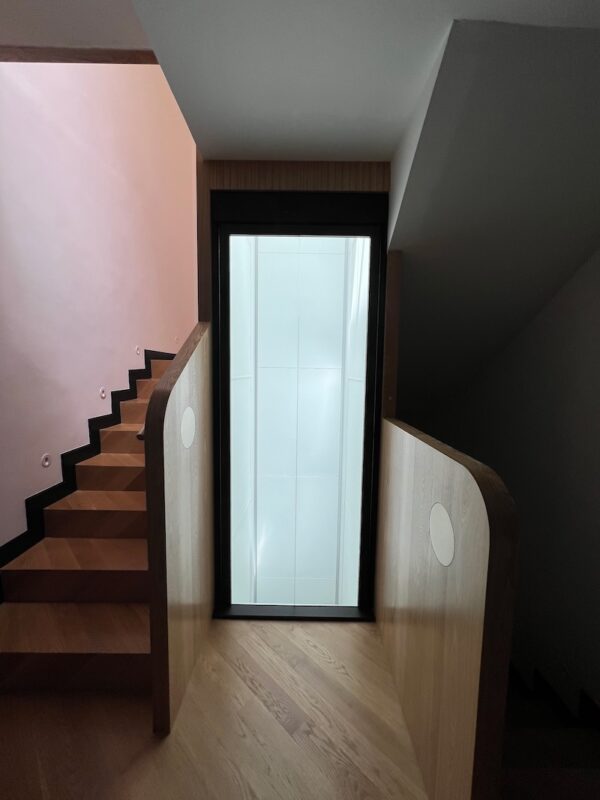
Urban Australia isn’t just changing. It’s shedding old habits. Melbourne’s skinny townhouses embrace laneways tightly. Sydney’s duplexes climb higher, not wider. Space is precious, and yet, we refuse to sacrifice comfort. So, how do we keep living well when floor plans shrink?
Stairs used to be the obvious answer—until they weren’t. In homes where every metre counts, why waste energy on steps when movement can be effortless? Why let a basic design antique dictate how we experience our space?
That’s where the compact household elevator steps in. No clunky machinery, no eyesore shaft. Just smart engineering tucked into the blueprint of modern living. It’s not about luxury (though it feels that way). It’s about rethinking how we move.
Because homes are stacking up, and so are expectations. We want accessibility without compromise and fluidity without bulk. And now, it’s possible. These lifts don’t just solve a problem. They reshape the way we live in vertical spaces.
So, is your home keeping up? Or are you still climbing the old-fashioned way?
Understanding All About Compact Lifts
What exactly is a compact home lifts?
Unlike traditional elevators, which often require large shafts and separate machine rooms. Small house lifts are self-contained systems designed to fit seamlessly into residential spaces. Think of them as sleek, smart vertical movers designed for homes. Not commercial buildings.
They’re tailor-made for narrow floor plates and limited square footage. From tiny houses and slimline terraces to multi-story townhomes, compact elevators adapt effortlessly. They require minimal structural alteration and, in many cases, can be installed without pits or overhead clearance.
Their key advantage? You get vertical mobility without sacrificing your layout, interior aesthetics, or precious floor space.
Why Compact Lifts Are Gaining Popularity in Australia
There’s a noticeable shift happening in Australia’s housing mindset.
- Urbanisation is rising: More people are flocking to cities, where land comes at a premium. This has led to vertical builds that prioritise every centimetre of usable space. Compact lifts fit right into this puzzle.
- Accessibility needs are evolving: Australia’s aging population is choosing to stay in their homes longer. Compact home lifts allow for graceful aging-in-place, eliminating the daily challenge of stair use for seniors and those with reduced mobility.
- Home value matters more than ever: Property owners increasingly view smart upgrades as strategic investments. A small house lift adds comfort and signals modernity, future readiness, and premium functionality to potential buyers.
- Sustainability is becoming non-negotiable: Australians care deeply about environmental impact. Household elevator, particularly those with energy-efficient mechanisms, meet this demand with lower energy consumption and minimal environmental footprint.
In short, compact elevators are ticking all the right boxes now and in the future.
Essential Features of Compact Home Lifts
Not all lifts are created equal. If you’re considering adding a compact lift to your home, here’s what to look for:
1. Energy Efficiency
Look for models that use pneumatic or screw-driven motors. These systems consume less power without compromising performance. For example, SWIFT Lifts offers eco-conscious variants designed with sustainable materials and optimised energy use.
2. Low-Maintenance Design
Who has the time or budget for monthly maintenance? Small lifts are built for endurance. They use fewer moving parts. Corrosion-resistant materials. This means lower maintenance costs and fewer interruptions in your day-to-day life.
3. Top-Tier Safety Features
Safety can’t be compromised. Especially in homes with kids or older residents. Ensure your lift includes the following:
- Emergency stop systems
- Overload sensors
- In-cabin alarms
- Buffer springs or pit safety mechanisms
- Automatic door sensors
SWIFT Lifts integrates all of the above with optional extras like child locks and remote monitoring.
4. Compact Shaft and No Machine Room Requirement
Space-saving is the name of the game. The best small lifts don’t demand extra rooms or deep shafts. Many units today are machine-room-less (MRL) and can be slotted into stairwells, corners, or even closets. Their footprint is minimal, but their impact is transformative.
5. User-Friendly Controls
Simplicity should be standard. Whether you prefer traditional push-button panels or want to go smart with a touchscreen or remote operation, modern lifts offer options for all preferences. Some even integrate with home automation systems for ultimate convenience.
6. Smooth and Silent Performance
No rattling. No sudden jerks. Just smooth, gentle rides between levels. Small household elevators today are engineered with vibration-dampening and sound-insulating features, making them suitable even when installed near bedrooms or shared living spaces.
Benefits of Installing a Compact Home Lifts
The advantages of a small house lifts extend far beyond convenience:
- Mobility for everyone: From kids racing to the top floor to grandparents avoiding the stairs. A lift provides access for all ages.
- Space optimisation: Unlike staircases. It can eat up valuable square metres. Lifts are vertically aligned and require minimal intrusion.
- Added property value: A lift enhances your lifestyle and your resale appeal. It’s a standout feature in a competitive real estate market.
- Future-proofing: No one wants to remodel their home every decade. A compact lift is an investment that adapts as your needs evolve.
- Time and effort saved: Laundry, groceries, suitcases—everything becomes easier when you don’t have to drag it up and down stairs.
Compact lifts don’t just solve problems. They upgrade your entire living experience.
Compact Home Lift Price Guide in Australia (2025)
Curious about what it costs to install one of these game-changers?
As of 2025, the average price of a compact residential lift in Australia starts at around AUD 25,000–35,000 for basic two-stop models. High-end versions with premium finishes, glass enclosures, or smart features can reach AUD 50,000–70,000. Depending on customisation and structural needs.
Factors that affect the cost:
- Type of lift: Pneumatic and screw-driven models cost more upfront but offer greater energy efficiency.
- Travel distance: The number of floors and stops directly influences price.
- Design and finish: Custom panels, lighting, flooring, and door designs were added to the final quote.
- Installation complexity: Homes with narrow shafts, ceiling obstructions, or tight access may require additional construction work.
While the upfront investment might seem significant, it pays off in long-term ease, property value, and reduced maintenance.
Things to Consider Before Purchasing
Before you get started, keep these points in mind:
- Vertical travel needs: Are you spanning two floors or more? Make sure your chosen model is rated for the required height.
- Shaft space and layout: Even compact lifts need certain clearances.
- Lift type: Pneumatic lifts are quiet and energy-efficient. Hydraulic ones offer a smooth ride. Gearless variants are low-noise and durable. Pick what fits your home and goals best.
- Cabin design: Match your interiors. Your lift should complement your home’s character.
- Warranty and service: Look for providers like SWIFT Lifts that offer reliable warranties.
- Timeline and modifications: Some lifts can be installed in a week; others might require minor civil works. Understand the elevator installation time upfront to plan around it.
Buying a lift isn’t just a transaction. A design decision, a comfort upgrade, and a commitment to quality living.
Conclusion: The Ideal Lift for Compact Living
When space is tight, every inch matters—and so does every decision. A compact home lift blends form with function, delivering comfort, safety, and style without asking for more room than you can give.
This isn’t a futuristic luxury in Australia’s urban landscape, where compact living is fast becoming the norm. It’s a present-day solution built for real homes and real people.
Efficient. Quiet. Beautifully designed. And built to last.
SWIFT Lifts understands the pulse of modern homes and delivers compact mobility systems that are as innovative as they are intuitive.
Ready to go up without taking up more space?
Let SWIFT Lifts help you rise smarter with affordable home lifts.
FAQs
Absolutely. Modern compact lifts are designed for retrofitting, slipping into tight spaces without major renovations. Think of it like giving your home an upgrade—without the demolition drama.
Surprisingly little. Some models fit into a footprint smaller than a wardrobe (around 1m²). Clever engineering means they don’t sacrifice comfort for size—you’ll still glide up smoothly.
They’re perfect. No more stair struggles—just easy, independent movement. Many include accessibility features like low-effort controls and safety sensors. Aging in place just got simpler.
Most homes see their lift up and running in 2-4 weeks. Disruptions are minimal—it’s quicker than a kitchen reno and far more life-changing.
Sometimes, but it’s straightforward. Regulations vary by state, but we handle the paperwork. Typically, freestanding lifts skip red tape, while structural modifications might need a nod from the council.
Get In Touch!










